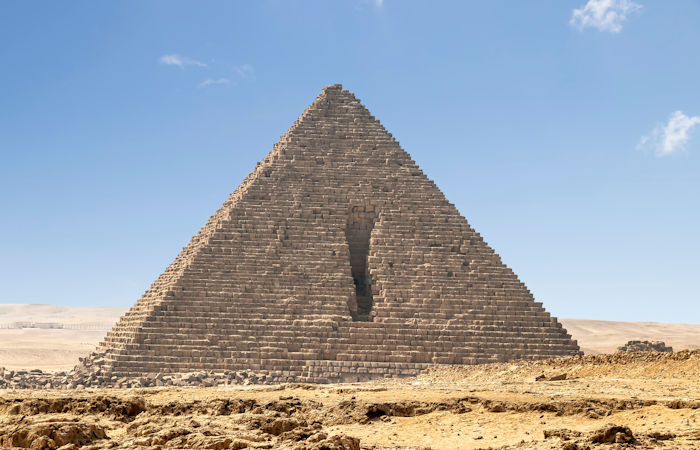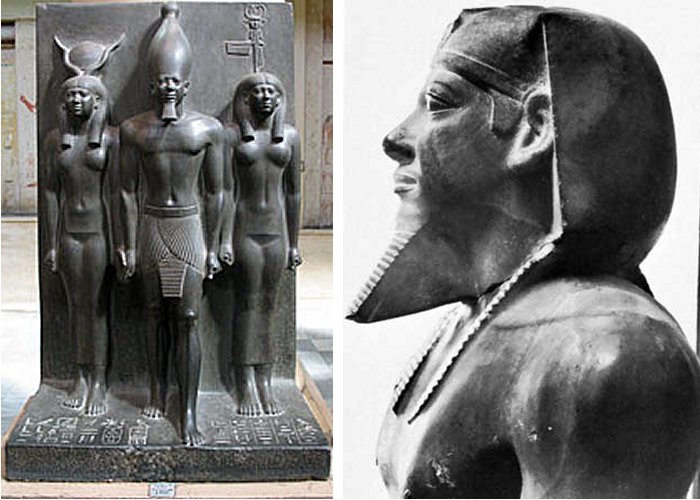Mysterious Pyramid Of Menkaure Remains An Ancient Puzzle
Ellen Lloyd - AncientPages.com - Pyramids are frighteningly anonymous structures.
Pharaohs built huge and well-constructed pyramids, tombs, and temples to glorify themselves and to be remembered after death, but their bodies were never inside these structures.
The Pyramid of Menkaure is the smallest of the three main Pyramids of Giza, located on the Giza Plateau in the southwestern outskirts of Cairo, Egypt. Credit: Adobe Stock - Alfredo
In none of them the bodies of builders or rulers were found, and when they were occasionally found, it turned out to be "very young" and had no connection to Egypt's ancient times.
The Old Kingdom stone pyramids were never actually ‘real’ tombs. The 19th-century so-called 'tomb theory' was only invented to replace earlier theories suggesting the pyramids as storehouses for grain or repositories of sacred measurements of the planet.
So for what purpose were these impressive gigantic structures built?
In fact, no one, even Sir William Flinders Petrie, the earliest authority on the pyramids of Giza, had any idea about it.
Isn't it strange that 'tens of millions of stone blocks used in Egypt’s large pyramids construction, from Meidum in the south to Abu Rawash in the north, and in no place is the name of their builders inscribed, except for a single quarry mark of red ochre paint in the Great Pyramid,' (Malkowski, Ancient Egypt 39,000 BC).
Left: Menkaure with Hathor on his right, and nome figure on his left; Right: Menkaure, detail of an alabaster statue from Giza; in the Egyptian Museum, Cairo Courtesy of the Egyptian Museum, Cairo; photograph, Hirmer Fotoarchiv, Munich
This single quarry mark 'was possibly forged by Richard Howard-Vyse under the pressure of competition with another archaeologist, the Italian Count Caviglia.'
Despite the claim that the pyramid was a tomb, several Egyptologists do recognize that the intent of the pyramid still remains a mystery.
Mysterious Pyramid of Menkaure
The 4,300-year-old pyramid of Menkaure, the smallest of the famous trio at Giza (some 200 feet lower than the other two), is now open to the public after the completion of its renovation.
The pyramid of Menkaure (Mycerinus) measures 356 feet (108 meters) along each side and some 215 feet (65 meters) in height and an angle of 51 degrees. It was built to serve as the tomb of the fourth dynasty Pharaoh Menkaure (2530 BC.-2500 BC.)
This pyramid is also very anonymous. We do not know much about Menkaure.
Researchers discovered an empty basalt sarcophagus, an anthropoid coffin lid made of wood, and some bones. These bones, along with the coffin, were later proved to be dated from the early Christian era and had no connection to Pharaonic times.
On the other hand, the basalt sarcophagus could have belonged to Menkaure.
Unfortunately, nobody had the opportunity to examine it because it had been lost at sea when the ship on which Vyse sent it to England had sunk off the coast of Spain.
Since it was a matter of record that the sarcophagus had been found empty by Vyse, it was once again assumed tomb robbers must have removed the pharaoh's body.'
This 'robbery theory' was only supported by 'evidence' of the missing mummies and grave goods.
The lack of bodies in the pyramids and the absence of decorations and inscriptions in countless galleries, chambers, corridors, and passageways are also evident.
The same is true regarding all three Giza pyramids. Not a single word - praising the pharaohs - has been inscribed on the pyramids' walls.
Other burial places of ancient Egypt have beautiful decorations, paintings, and inscriptions referring to the ritual spells and invocations indispensable for the deceased on his journey toward eternal life.
Nothing like that can be found in Giza's trio, and that's because these pyramids were not built to serve as tombs at all.
The sixth ruler of the 4th dynasty, Menkaure, built himself a pyramid one-tenth the size of Khafre's. And unlike the other Great Pyramids, whose walls were made of limestone, Menkaure's pyramid was covered with granite on the bottom levels and in the burial chamber—a costlier, more difficult stone to work with.
Menkaure died unexpectedly, and work on his pyramid complex was abandoned. Later, Menkaure's heir, Shepseskaf, the sixth and last pharaoh of the 4th dynasty of Egypt during the Old Kingdom, later completed the complex using mud brick.
"Menkaure’s son and successor, Shepseskaf, used mud brick to complete the Mortuary and Valley Temples, all of the subsidiary pyramid temples, the Causeway, and probably the Enclosure Wall. A stele found in eight pieces in the portico of Menkaure’s Mortuary Temple reads:
“Under the Majesty of the King of Upper and Lower Egypt, Shepseskaf, the Horus, Shepsesy-khet, in the year after the first census of the large and small cattle, he made it as his monument for his father, the King of Upper and Lower Egypt [Menkauwra].” 1
Updated on March 5, 2024
Written by Ellen Lloyd – AncientPages.com
Copyright © AncientPages.com All rights reserved. This material may not be published, broadcast, rewritten or redistributed in whole or part without the express written permission of AncientPages.com
Expand for referencesReferences:
- Rigano, Ch. Pyramids of the Giza Plateau
Metropolitan Museum of Art, Egyptian Art in the Age of the Pyramids
A. Sutherland - Pharaoh Menkaure – Egyptian Ruler Who Tried To Outsmart Fate - AncientPages.com
More From Ancient Pages
-
 Mysterious Ancient Lost Civilization Of North America Had Interest In One Particular Constellation
Civilizations | Apr 17, 2018
Mysterious Ancient Lost Civilization Of North America Had Interest In One Particular Constellation
Civilizations | Apr 17, 2018 -
 Ancient Indigenous Carvings On Boab Trees – Time To Rescue Ancient Art Before Trees Disappear
Archaeology | Oct 12, 2022
Ancient Indigenous Carvings On Boab Trees – Time To Rescue Ancient Art Before Trees Disappear
Archaeology | Oct 12, 2022 -
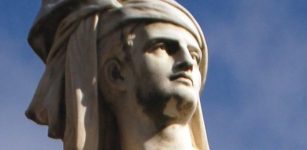 On This Day In History: Historical Scandal Took Place In France – On July 31, 1451
News | Jul 31, 2016
On This Day In History: Historical Scandal Took Place In France – On July 31, 1451
News | Jul 31, 2016 -
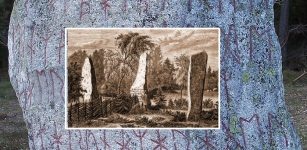 Björketorp Runestone With Frightening Message Is Still Untouched In Blekinge, Sweden
Featured Stories | Mar 19, 2023
Björketorp Runestone With Frightening Message Is Still Untouched In Blekinge, Sweden
Featured Stories | Mar 19, 2023 -
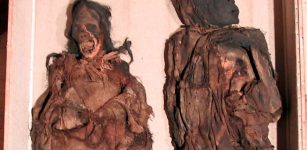 Scientific ‘Detective Work’ With South American Mummies Reveals They Were Brutally Murdered
Archaeology | Sep 9, 2022
Scientific ‘Detective Work’ With South American Mummies Reveals They Were Brutally Murdered
Archaeology | Sep 9, 2022 -
 Mysterious And Magnificent Pasha Gardens Built For Unknown Reasons
Featured Stories | Oct 8, 2018
Mysterious And Magnificent Pasha Gardens Built For Unknown Reasons
Featured Stories | Oct 8, 2018 -
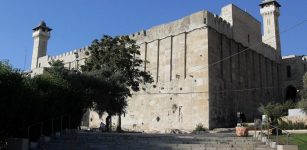 Tomb of Patriarchs In Hebron Was Used And Visited By Pilgrims 2,700 Years Ago – New Study
Archaeology | Jul 10, 2020
Tomb of Patriarchs In Hebron Was Used And Visited By Pilgrims 2,700 Years Ago – New Study
Archaeology | Jul 10, 2020 -
 4500-Year-Old Fingerprints Reveal Children Created Pottery Vessels In Ebla Kingdom
Archaeology | Oct 16, 2024
4500-Year-Old Fingerprints Reveal Children Created Pottery Vessels In Ebla Kingdom
Archaeology | Oct 16, 2024 -
 Ancient DNA Solves The Mystery Of Mitochondrial Eve And Human Evolution?
Archaeology | Sep 21, 2022
Ancient DNA Solves The Mystery Of Mitochondrial Eve And Human Evolution?
Archaeology | Sep 21, 2022 -
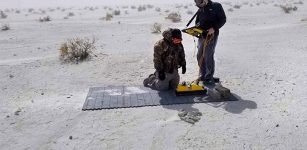 Radar Reveals ‘Ghost’ Footprints From Pleistocene Era
Archaeology | Nov 13, 2019
Radar Reveals ‘Ghost’ Footprints From Pleistocene Era
Archaeology | Nov 13, 2019 -
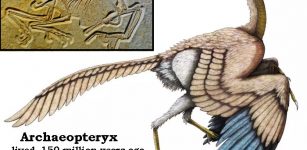 Oldest Recently Discovered Fossil of Bird ‘Archaeopteryx’ That Lived 150 Million Years Ago
Archaeology | Jan 29, 2018
Oldest Recently Discovered Fossil of Bird ‘Archaeopteryx’ That Lived 150 Million Years Ago
Archaeology | Jan 29, 2018 -
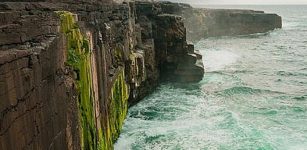 Intriguing Genetics: First Ancient Irish Human Genomes – Sequenced
Archaeology | Dec 29, 2015
Intriguing Genetics: First Ancient Irish Human Genomes – Sequenced
Archaeology | Dec 29, 2015 -
 Ancient Greek Inscription Could Reveal Biblical Saint Peter’s Birthplace – Archaeologists Say
Archaeology | Aug 29, 2022
Ancient Greek Inscription Could Reveal Biblical Saint Peter’s Birthplace – Archaeologists Say
Archaeology | Aug 29, 2022 -
 Waru Waru – Ancient Andean Irrigation System Brought Back To Life
Ancient History Facts | Apr 28, 2018
Waru Waru – Ancient Andean Irrigation System Brought Back To Life
Ancient History Facts | Apr 28, 2018 -
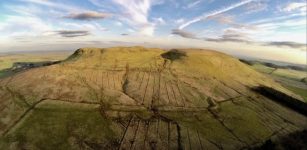 Study Sheds Light On Life Beyond Rome’s Frontier
Archaeology | Jun 2, 2022
Study Sheds Light On Life Beyond Rome’s Frontier
Archaeology | Jun 2, 2022 -
 The Ancient Giants Who Ruled America: The Missing Skeletons And The Great Smithsonian Cover-Up
Biblical Mysteries | Apr 26, 2014
The Ancient Giants Who Ruled America: The Missing Skeletons And The Great Smithsonian Cover-Up
Biblical Mysteries | Apr 26, 2014 -
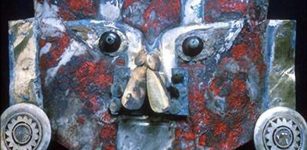 Red Paint On 1,000-Year-Old Gold Mask From Peru Contains Human Blood Proteins
Archaeology | Nov 1, 2021
Red Paint On 1,000-Year-Old Gold Mask From Peru Contains Human Blood Proteins
Archaeology | Nov 1, 2021 -
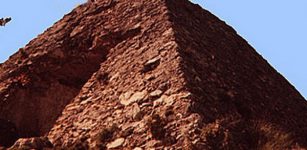 Mysterious Ancient Falicon Pyramid And Its Complex Obscure History
Featured Stories | Nov 28, 2018
Mysterious Ancient Falicon Pyramid And Its Complex Obscure History
Featured Stories | Nov 28, 2018 -
 Miraculous Cauldrons Of The Ancient Celtic World
Myths & Legends | Apr 17, 2024
Miraculous Cauldrons Of The Ancient Celtic World
Myths & Legends | Apr 17, 2024 -
 Skadi: Goddess Of Destruction, Giantess And Patron Of Winter Hunters And Skiers In Norse Mythology
Featured Stories | Dec 14, 2017
Skadi: Goddess Of Destruction, Giantess And Patron Of Winter Hunters And Skiers In Norse Mythology
Featured Stories | Dec 14, 2017

